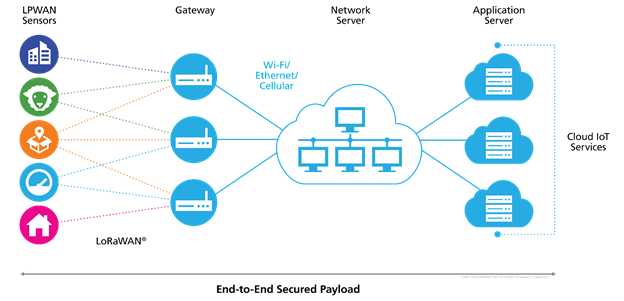
Sensor Integration
- The Internet of Things, usually shortened as IoT, grows every day bigger, covering more aspects of our daily life.
- Small devices are capable of transmitting data that allow better feedback from common services such as healthcare, urban traffic coordination, resources management as water, electricity and waste and so on.
- These little but powerful devices are although limited for most of the cases in their range of communication, as they expect a multitude of siblings nearby themselves for monitoring the surrounding area and forwarding their local information. While this might be true in some use cases, in a few of them this is undesired; the possibility of monitoring remote areas using long range communication is a must in natural environments such as rural areas, forests, mountains and so on.
- With a normal sensors multitude approach, a trail of sensors should be created and constantly maintained, or a specific node connected to power and network sockets should take care of forwarding the data; somehow, the need of a master node with high requirements becomes necessary, which is undesired.
- A possible solution to this is Low Power Wide Area Network (LPWAN) technologies: these are a sets of hardware (mostly radio antennas) and network protocols which provide wireless communication over long ranges with low power consumption. One of them is named LoRa and has gained lots of popularity in the last few years. This thesis' project aims to integrate sensors using such network technology within the GreenIoT project.

